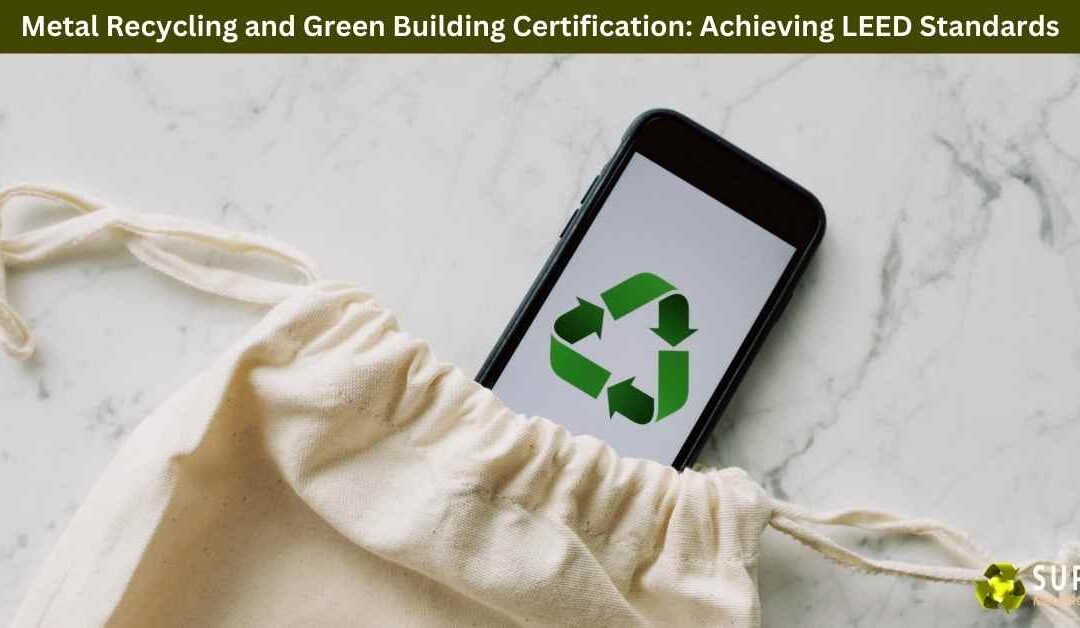Sustainability isn’t just a buzzword anymore—it’s a responsibility. Whether you’re in construction, architecture, or even a business looking to build responsibly, the push for environmentally friendly practices is stronger than ever. One of the key ways buildings can earn their green credentials is through LEED certification, and surprisingly, metal recycling plays a huge role in helping projects hit those standards.
What Is LEED Certification?
LEED, short for Leadership in Energy and Environmental Design, is a globally recognized certification that sets the benchmark for sustainable building practices. It measures everything from energy efficiency and water usage to indoor air quality and material sourcing. Essentially, it’s a scorecard that proves a building is designed, constructed, and operated in an environmentally conscious way.
In Australia, while we have local equivalents like Green Star, many projects still aim for LEED recognition to showcase their international sustainability credentials.
How Metal Recycling Fits In
You might be wondering: how does tossing scrap metal into a bin translate to a LEED point? Well, it’s more impactful than it sounds. LEED places a lot of emphasis on materials and resources, particularly recycled content. Using recycled metals in construction—like steel, aluminum, or copper—reduces the need for virgin materials, which in turn cuts down on energy consumption and greenhouse gas emissions.
Take steel, for example. Around 85% of steel in Australia is recycled, and using recycled steel in a building can contribute significantly to LEED credits under the Materials & Resources category. It’s not just about being eco-friendly; it’s about ticking those crucial sustainability boxes.
Real-World Applications
Let’s bring this to life with a quick example. The International House Sydney building incorporated recycled steel and aluminum throughout its structure. By sourcing these materials locally and responsibly, the project reduced its environmental footprint while also securing additional LEED points.
Another anecdote comes from Melbourne’s commercial sector. One developer worked with a local metal recycling company to reclaim copper wiring from an old office tower. This not only saved money on new materials but also contributed directly to the project’s green building certification. Simple steps like these can make a surprisingly big difference in achieving sustainability goals.
Beyond Recycling: The Bigger Picture
Metal recycling doesn’t just help earn points—it also reduces landfill waste, saves energy, and supports a circular economy. Every tonne of steel or aluminum recycled avoids the mining, processing, and transport of virgin materials. For construction companies aiming to hit LEED Silver, Gold, or Platinum, partnering with a reliable metal recycler isn’t optional; it’s a strategic advantage.
And it’s not just steel and aluminum. Copper, brass, and even certain alloys can all contribute to green building credits when responsibly sourced. In fact, some builders have even designed their projects with the end-of-life recycling in mind—a principle called design for deconstruction. This ensures materials can be reused or recycled efficiently, keeping them out of landfill and maximising LEED points.
How Australian Businesses Can Get Started
If you’re a builder or project manager in Australia, starting with metal recycling is easier than it sounds. Here are some practical steps:
- Partner with a local metal recycler: Look for a service that can provide documentation of recycled content—LEED loves proof.
- Audit your material sourcing: Check where your steel, aluminum, and copper come from. Are they recycled or virgin? Can they be swapped for recycled alternatives?
- Keep detailed records: LEED requires precise documentation. Keep receipts, certificates, and reports from your recycler.
- Educate your team: Make sure architects, contractors, and suppliers understand the sustainability goals. Collaboration makes the process smoother.
A little planning upfront can make all the difference when it comes to earning certification points and building responsibly.
Making a Lasting Impact
At the end of the day, metal recycling is about more than LEED points or green credentials—it’s about building responsibly for the future. Every recycled beam, panel, or piece of wiring is a step toward a more sustainable construction industry in Australia. By making metal recycling part of your building strategy, you’re helping reduce waste, conserve energy, and create structures that are built to last—in every sense of the word.
If you are in Mordialloc, and looking for a metal recycling service, this is the best way to visit us.
Super Metal Recycling
345 Frankston – Dandenong Road, Dandenong South VIC 3175
(03) 9706 4909


Recent Comments